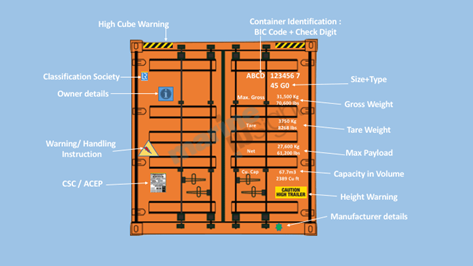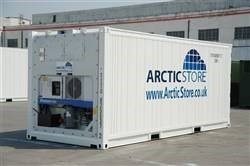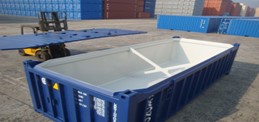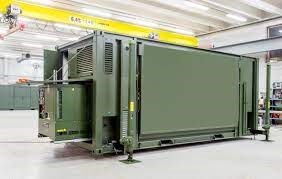Double doors make it easy for loading and unloading of freight. These types of shipping containers are typically made of steel and iron. They are available in standardized sizes of 40ft and 20ft.
Most containers are manufactured from steel to provide structural strength despite having a discontinuity at the top. Reinforcements run along all sides to keep the shape rigid and also to support loads from all directions.
The cover on top and the doors can be locked and are also sealed by the customs at a port. While other containers are difficult to tamper with due to the seal placed on the locks, there is an additional challenge of sealing open-top units.
For this reason, heavy-duty covers are used and are kept in place by clamp locks that cannot be unlocked without a special device. Additionally, these containers are monitored while in transit to prevent theft or vandalism to the unit.
Loading and unloading operations are carried out in a manner similar to any normal container. Spreader cranes are used to lift the unit up while container stackers are used within the yard for arrangement.
In most cases, the cargo within fits well within the container dimensions, and so, the tarpaulin remains horizontal. In such cases, the container can be stacked under other units without any structural problems. However, if the cargo is large, bulky, and does not fit into the container, then some portion of it will stick above the container sides.
In such cases, the container cannot be stacked. During shipments, such container units are kept in a separate location to ensure that they are not damaged.
Similarly, at the container yard, open-top containers are placed in a different location to prevent accidental stacking. For moving OT units with cargo that sticks above the roof, only forklifts or vertical stacking cranes can be used.
Due to the novelty of OT containers, they are not easily available in the market. Shipping lines such as Maersk provide these facilities around the globe and even offer special services to keep your cargo safe and secure throughout the journey.
Due to the lower number of such units in circulation, they cost slightly higher than conventional containers. Also, the cost varies depending on the type of cargo you wish to transport. Cargo that stays entirely within the unit is typically charged much lesser compared to cargo that extends beyond the roof cover.





















